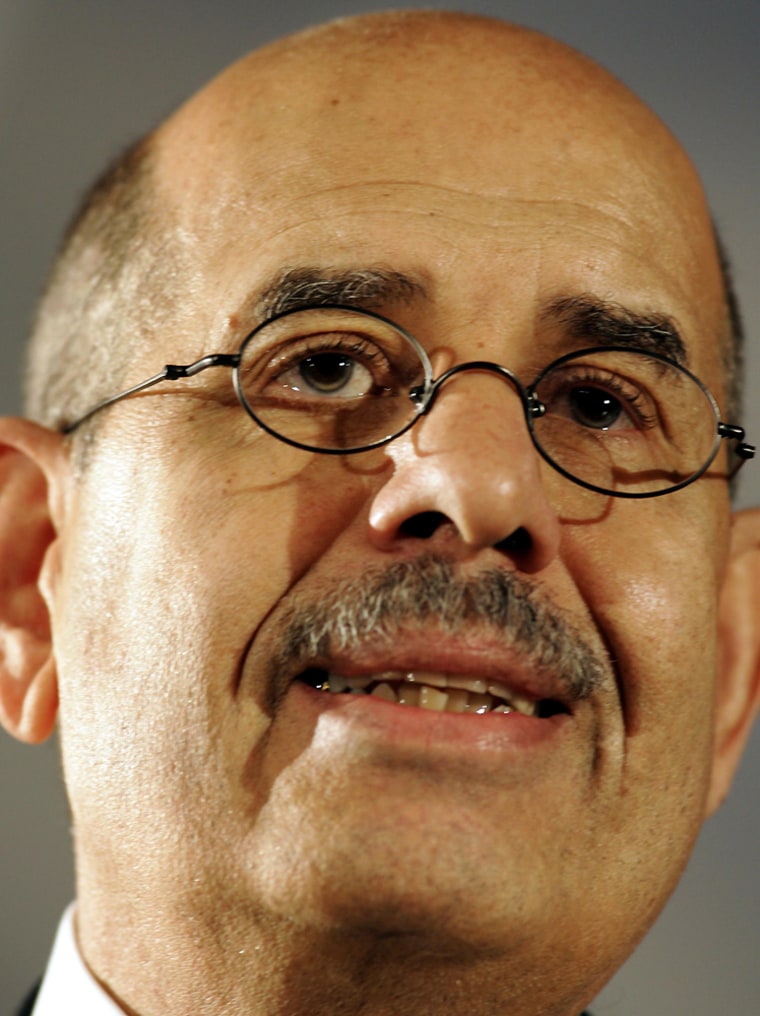The head of the U.N. nuclear watchdog agency will go to Iran next week to try to wrest concessions from Tehran on its atomic program, diplomats and officials said Friday.
Mohamed ElBaradei, the head of the International Atomic Energy Agency, “expects to get positive results” from his trip, a senior IAEA official told The Associated Press.
The timing of the planned visit is important. It will occur only about two weeks before ElBaradei is to report to the U.N. Security Council on whether Iran has heeded a council call to re-impose a freeze on uranium enrichment and fully open its nuclear program to an IAEA probe.
Those requests were contained in a March 29 Security Council statement that also called on ElBaradei to report back both to his own agency and to the council in 30 days on whether Iran was complying.
The statement is not binding on Iran. But if it fails to heed it, the road would be formally open for the five permanent council members to start working on a resolution that Iran would have to comply with — and which, in theory, could be backed up by military action.
The trip was unexpected, although diplomats close to the agency said ElBaradei had a standing invitation from Iran to visit for some months but was reluctant to go without hopes of progress.
Next steps after meeting
If ElBaradei comes back without meaningful concessions from Iran, the United States, France and Britain will be strengthened in seeking forceful council action. But if Tehran does meet some of the statement’s requests, Russia and China, the two other permanent council members, will have a stronger case in their arguments that diplomacy — and not threats — work best with Tehran.
“The visit will provide Iran an opportunity in advance of that report to provide information required by the IAEA to fill in the gaps in the history of Iran’s nuclear activities,” said the official, who demanded anonymity because the trip has not been officially announced.
A diplomat familiar with the agency warned against heightened expectations, saying ElBaradei “is not going there to negotiate any settlement,” but added “he does not expect to come back with empty hands.”
That suggested that ElBaradei was hoping to wrest at least partial concessions from Iran — if not on its refusal to give up enrichment, a possible pathway to nuclear arms, then at least on other issues of concern to the international community, including a decision earlier this year to cut back on the scope and frequency of IAEA inspection.
Other problems faced by the agency include spotty information on Tehran’s enrichment program, leading to fears it might be hiding facilities beyond the ones it has revealed to the IAEA.
Probe going on for three years
The agency, which started investigating Iran more than three years ago after it learned it had been running a secret nuclear program for nearly two decades, is also concerned with “dual use” experiments and materials that could be applied in nuclear weapons programs.
It has noted apparent military involvement in what Tehran says is strictly a civilian program and earlier this year sounded the alarm bell over drawings showing how to mold fissile material into the shape of warheads.
Tehran insists it is not interested in nuclear weapons and refuses to re-impose a temporary freeze on enrichment, saying it has a right to that activity to make nuclear fuel under the Nonproliferation Treaty.
Enrichment uses centrifuges to spin uranium gas to low-grade levels, suitable for fuel, or highly fissile material, which can be used to make bombs
While it plans to run thousands of centrifuges in its drive to run a full-scale enrichment program, Tehran’s known enrichment capabilities are now restricted to a 164-centrifuge pilot plant at Natanz.
Still, officials familiar with the facility say it could start operating within days. Once that happens, the expertise learned from the plant could be applied to large-scale enrichment with the potential of producing material for hundreds of warheads.
